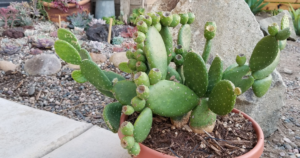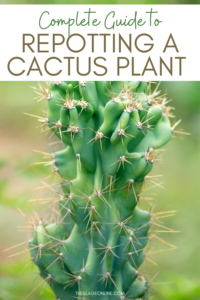In the realm of indoor gardening, the Christmas Cactus (Schlumbergera) stands out not just for its striking blooms, but also as a vibrant symbol of the holiday season. Observations of thriving Christmas Cacti are often paired with inquiries about the use of coffee grounds as a nutritional supplement. This practice is backed by both anecdotal evidence and emerging botanical research. As the duality of coffee grounds manifests in the world of horticulture, it raises questions about their efficacy and the myriad benefits they may bestow upon these festive flora.
The Nutritional Value of Coffee Grounds
Considered organic waste, coffee grounds are often overlooked as a potential resource for plant nutrition. These remnants from the brewing process are rich in essential nutrients that can foster healthy growth in Christmas Cacti. Specifically, coffee grounds contain nitrogen, phosphorus, potassium, and magnesium—the building blocks required for robust plant health.
Nitrogen is crucial for leaf development and overall plant vigor, while phosphorus plays a role in root formation and flowering. Potassium, on the other hand, regulates fluid balance and aids in photosynthesis, bolstering the plant’s resilience to environmental stressors. Magnesium, an essential component of chlorophyll, is indispensable for the plant’s photosynthetic processes. These vital nutrients can promote more vibrant blooms and volume of foliage in a Christmas Cactus, making the use of coffee grounds a potentially beneficial practice.
Furthermore, the slightly acidic nature of coffee grounds aligns favorably with the Christmas Cactus’s preference for well-draining, slightly acidic growing mediums. When incorporated into the soil, these grounds can amend the substrate, creating an optimal environment for root development.
The Ecological Benefits of Coffee Grounds
Utilizing coffee grounds extends beyond mere plant nutrition; it encapsulates a sustainable approach to gardening. By repurposing coffee waste, gardeners contribute to a circular economy in which materials are reused rather than discarded. This not only reduces the carbon footprint associated with waste disposal but also decreases reliance on synthetic fertilizers.
In addition to their nutritional properties, coffee grounds enhance soil aeration and drainage. Since Christmas Cacti thrive in dry soil conditions, the incorporation of coarse coffee grounds can improve the substrate’s structure, ensuring that excess moisture is expelled. This mitigates the risk of root rot, a common concern in succulent care, thereby cultivating a healthier plant.
The Impact on Soil Microbiome
Another fascinating aspect of coffee grounds is their influence on soil microbial life. These grounds can act as probiotics for your soil, encouraging beneficial microorganisms that thrive on organic matter. The enhanced microbial activity fosters a vibrant soil ecosystem that can further promote plant health.
Beneficial microbes can facilitate the absorption of nutrients by breaking down organic compounds and making them more accessible to plant roots. This symbiotic relationship pays dividends not only in plant vigor but also in disease resistance—an invaluable trait for any plant enthusiast.
The application of coffee grounds creates a habitat for microorganisms that improve soil fertility and can even suppress pathogenic agents. This phenomenon creates an intricate web of life beneath the soil surface, ultimately leading to a more resilient Christmas Cactus.
Guidelines for Using Coffee Grounds
While the benefits of coffee grounds are significant, caution is paramount. Coffee grounds should be used judiciously to avoid potential pitfalls. Overapplication can lead to excess nitrogen, which may stymie flowering and lead to excessive leaf growth at the expense of blooms.
To maximize the benefits, it is advisable to use coffee grounds as a top dressing rather than mixing them directly into the potting medium. A light layer of grounds sprinkled on the soil’s surface can provide a steady release of nutrients while also moderating soil moisture levels. Additionally, mixing grounds with other organic materials, such as compost or worm castings, can create a balanced amendment, enhancing microbial life further.
In terms of quantity, a light dusting every month or so during the growing season can suffice. It is essential to monitor the plant’s reaction and adjust as needed. Observing the Christmas Cactus’s growth patterns will offer insights into whether adjustments are necessary.
Final Thoughts: A Festive Fusion
The combination of the Christmas Cactus and coffee grounds offers an intriguing exploration into sustainable gardening practices. While the holiday blooms provide cheer and beauty, the use of coffee grounds reconnects us with the cyclic nature of our resources. Each time grounds from your morning brew are used to nourish your plant, you’re participating in a broader ecological dialogue.
Ultimately, the allure of using coffee grounds for a Christmas Cactus lies not only in the tangible benefits—nutritional support, soil amendment, and ecological contribution—but also in the deeper relationship cultivated between gardener and plant. This rather unassuming practice resonates with our innate desire to nurture, to create flourishing life amidst a bustling world, embodying the very spirit of growth that resonates during the holiday season.




Leave a Comment